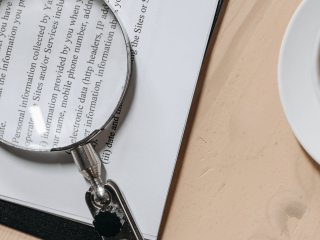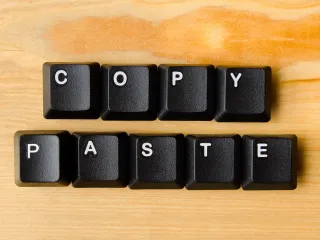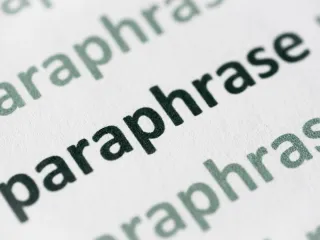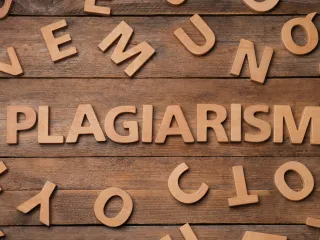You already know that it’s unethical and, in some cases, illegal to use another person’s work without giving them credit. Plagiarism is intellectual theft, whether you’re a professional writer or a student. But did you also know that it’s possible to plagiarize yourself?
Like other forms of plagiarism, self-plagiarism can cause severe problems for you professionally and academically if you’re not careful. Here’s everything you need to know about citing yourself so you can avoid unintentionally plagiarizing yourself.
Why Self-Citations Are Important
There are several reasons why it’s essential to self-cite when referencing your prior work. If that previous work is published, for example, then quoting from it without proper citation could be a violation of your publishing agreement.
Even if your work is unpublished, it’s inappropriate to reuse prior work without proper citation and identification. If you’re a student, reusing work from a previous assignment without doing any new work deprives you of the learning opportunity, and it may also be a violation of your high school or college’s academic integrity policy.
How to Cite Yourself
There’s not much difference between citing your work and citing someone else’s work in most style guides. As a general rule, you cite your previous work in the same way you cite a similar work by another author.
Let’s say you wrote and published a novel. Under most style guides, if you wanted to quote or reference a novel you wrote, you would cite it in the same format as you would cite a novel by anyone else. Likewise, if you wanted to reference a research paper you wrote, you would cite it using the same format as a research paper completed by someone else.
Published vs. Unpublished Work
Whether you’re a content creator getting paid for a piece of work or a student submitting a paper for high school or college credit, you must cite every piece you reference—including published, scholarly sources as well as unpublished works. This is true whether you’re citing your own work or someone else’s.
However, this issue comes up more often when it comes to your own work simply because you’re more likely to possess your own unpublished work than another person’s. However, the American Psychological Association (APA) Style Guide and the Modern Language Association (MLA) Style Guide differ somewhat in handling citations to unpublished work.
How do you determine whether your work is published or unpublished? In most cases, it’s pretty straightforward. If your work has appeared in an anthology, journal, or otherwise been made public, it’s a published work. If it hasn’t appeared anywhere and is solely in your possession, then it’s an unpublished work.
Things get a little fuzzier when you consider the work that you’ve shared online. If you’ve posted it somewhere that it can be accessed by the general public, like an online forum, then it’s been informally published and should be cited as a website.
On the other hand, a private document that can only be accessed by people you authorize using a private link is generally considered unpublished. Unless a stranger could access it without your authorization, your own private work is unpublished.
APA Format
Under the APA Style Guide, a published work is always cited the same way, whether it’s your own or someone else’s. If the work you are citing is published, cite it as you would a similar publication by another author, even if it’s your own.
However, if you cite your unpublished work, the APA citation style requires you to specify that the work is unpublished. In addition, if you created the work for a particular purpose, you must state that purpose in the citation.
Examples
Published Research Paper – Walter Wombat, a researcher, previously published a research paper in a wildlife journal. Now Walter wants to cite that study in a new paper. He will cite it in the same way as he would another researcher’s published study:
Last Name, First Name (Year of publication). Title of study. Title of Journal, volume number(issue number), page numbers. http://webaddress.com
Wombat, Walter (2018). Wombats in the wild: a study. Wildlife Journal, 47(3), 48-63. http://wombatstudies.org
Unpublished Assignment – Walter also wants to cite a previous assignment from his graduate school coursework in the new research study. Under the APA Style Guide, to cite to an unpublished student assignment, Walter must also identify that the study is unpublished, as well as its purpose:
Last Name, First Name (Year authored). Title of study [Unpublished study submitted for course]. University Name.
Wombat, Walter (2020). Wombat teeth grow forever [Unpublished study submitted for Biology 1001]. Marsupial University.
If Walter also cited other sources in his unpublished study, then he must also cite those sources in the reference list of his new work.
Other examples – Citation styles for different types of sources can be found in the complete 7th edition APA Style Guide at the Purdue OWL website.
MLA Format
As the APA Style Guide, the rules for citing your own published work are the same as citing someone else’s under the MLA Style Guide. A published work is cited the same way, whether you’re self-citing or citing someone else’s work.
The MLA Style Guide doesn’t explicitly require you to identify an unpublished manuscript or unpublished paper in the reference list. However, you still must identify the origin of an unpublished document, such as the collection where it’s housed or the reason for its creation.
There are plenty of unpublished documents available in public and private museums and personal collections around the world. Your unpublished work is most likely either from your personal collection or submitted for a high school or university assignment.
Examples
Published Research Paper – Walter Wombat is writing an article for a popular science magazine and wants to reference a study he published previously in a peer-reviewed science journal. He will cite it in the same way as if he were citing another person’s published study:
Last Name, First Name. “Title of Article.” Title of Journal, Volume, Issue, Year, pages.
Wombat, Walter. “Wombats in the Wild.” Wildlife Journal, 47, 3, 2018, 48-63.
Unpublished Assignment – Suzie Scholar is writing a reflective piece on her growth as a writer for a college assignment. In it, she wants to reference a piece she wrote for an assignment in high school. While she doesn’t have to specify that the piece is unpublished, Suzie does have to identify its source:
Last Name, First Name. “Paper Title.” Date authored. Class, School, assignment type.
Scholar, Suzie. “My Final Paper.” 1 May 2010. 12th Grade English, Wisdom High School, student paper.
Other Examples – You can find citation formats for different types of sources in the complete MLA Style Guide at the Purdue OWL website.
Avoiding Self-Plagiarism
To avoid self-plagiarism under any style guide, you must cite all of your sources using in-text citations and a list of works cited. This is true whether you’re citing your own work or someone else’s.
One way to ensure that you’re not accidentally committing self-plagiarism or any other kind of plagiarism is to use a plagiarism checker like Quetext. If you’ve unintentionally quoted or paraphrased from a source without citing it, a good plagiarism checker will flag it for you so you can cite it appropriately.
Quetext’s plagiarism checker takes this one step further by automatically generating the appropriate citation for you, making it easy to avoid unintentional plagiarism.









